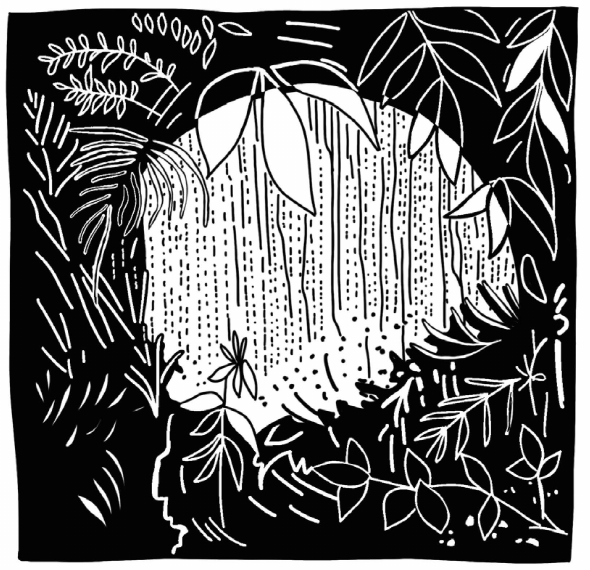
Sh-Al-Om
“Shalom” is the Hebrew word for “peace”, which is the overall resulting state of being (that is, ontological) and viewing experience (that is, phenomenological) following the whole process of thoughts, ideas, reflections, and artistic methods coming together. Furthermore, it comprises the “Al” and “Om” for Alpha and Omega, the two key “letters” (building blocks of words, effectively, the life-giving Word) that initiated, guided, and brought the artwork to some kind of harmonious completion (which is also carried in the meaning of shalom). On this note, we can also use the letters in the corresponding language (so often a barrier to relation and meaning-making), thus emphasising the implicit relationship between text and image, even in the title of the “group name” / “name of artwork”:
ָׁ ש-α(l)ω(m)
ARTIST STATEMENT by Taya De La Cruz & Alice Gavin Atashkar
As time unfolded in our collaborative discussions, we noticed not the differences but, rather, the similarities of our lived experience. Our approaches in dealing with unexpected news, wellbeing concerns, relationship difficulties, all set against a societal malaise of a global pandemic. A common theme emerged: the unity and polarity of the Alpha and Omega. We viewed them not as separate entities, but as one cyclical entity, with both parts essential to progression through life.
As we meditated on the topic we noticed the acute search for something more, a deeper dive into the questioning of our existence, the relief and unexpected surprise of a deep sense of peace.
SUPPORTING STATEMENT by Giulia Privitelli, Erin Cockley Taya De La Cruz & Alice Gavin Atashkar
“See what love the Father has lavished on us, that we should be called children of God! And that is what we are!
The reason the world does not know us is that it did not know him. Dear friends, now we are children of God, and
what we will be has not yet been made known. But we know that when Christ appears, we shall be like him, for we
shall see him as he is” (1 John 3: 1-5)
In the beginning of our collaborative endeavour was a failure, an inability to understand, a restless dissatisfaction with the incomplete and uncertain; ours was a wounded knowledge, a failed attempt to sink our teeth into some straightforward answer to the question “what is Revelation?”: the unsolvable riddle:
At once, it is everything. At another, it is nothing.
It is to come, yet, it has also already been.
It is everywhere. It is nowhere. And yet, it is also now here.
What or Who am I?
Who am I?, indeed. For this, as was made clear in the end, was the only question we could truly begin to answer; the only question on which we could build a relation to work together, to work towards that which we had no answer for: our wounds, embedded in the tapestry of our daily lives.
The Book of Revelation, which was our starting point, comes at the end of the Biblical collation of books, yet it is a response and fulfilment to what occurs in the Genesis, the first book. The end, therefore, recalls the beginning, or rather, retells the beginning through the lens of recreation—the climax of the New Testament, itself a fulfilment of the Old, the Torah, that is, the story of the Israelites’ discovery of their identity as beloved “children” of a living God. The journey—the passage from the beginning to the end—however, cannot be discounted; indeed, it must be remembered continuously. The journey, then, is one built on memory, on the sharing of collective and personal stories, on the retelling of lived experiences in relation to the other, on the innumerable moments that led to the point of where each one stands—a sustained and resounding echo of man’s relation with the invisible, ineffable, and unknowable “Other”.
Thus, the journey is an essential part of and towards Revelation, which is, as it were, a revelation of what and who one is and in relation to whom. The journey is both a temporal and physical space through which one learns how to dwell like children, driven by play—and a love for play—rather than fear and the misled desire to control. It is, thus, a learning of how to abandon oneself to the “condition” of unknowability—the condition of secrecy and hiddenness which not only sustains curiosity and desire but also the imagination and, therefore, creativity. It is, in other words, the life-giving condition which allows one to be in relation—even with the invisible, with the “not yet”; it allows creation to continue: the endless journey towards that which cannot be grasped, in word or image.
Finally, it is hoped that at the end of our restless journeying we shall return to that “secret” which utters things into being as they are and made to be; the “secret” whereby we could finally truly experience and “see” things as they are, as we ourselves become who we are: the “unexpected surprise” of discovering that which has always been.
We shall not cease from exploration
T.S Eliot, Four Quartets.
And the end of all our exploring
Will be to arrive where we started
And know the place for the first time